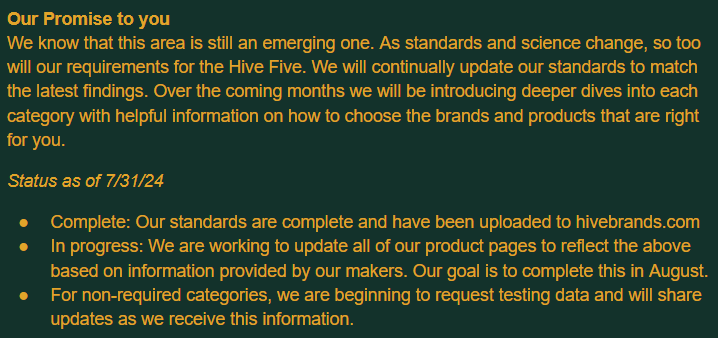Why are there heavy metals in food to begin with and how do we get to better?Updated a year ago

Heavy metals like lead, arsenic, cadmium, and mercury are non-essential elements that may be toxic at elevated and/or long-term exposure levels. They naturally exist in air, water, and soil due to environmental processes like wildfires and volcanic eruptions or from human activities like driving cars and manufacturing. Plants and animals can absorb them from the environment, although most foods contain very low to non-detectable levels. Some ingredients have a higher risk of absorbing these metals due to their type or how they are grown.
Heavy metals can also come into contact with ingredients or products during processing. For example, when ingredients are left to dry in the sun, they can be exposed to heavy metals present in the air from nearby roads, factories, or urban areas, or on contaminated surfaces such as lead-painted tables.
The key for the future is our soil health. The healthier our soil, the fewer heavy metals to begin with. Agricultural practices like regenerative are leading the way to improve soil health. So over time, as more and more farms choose these practices, crops will be increasingly less likely to uptake heavy metals.
In the interim, we believe in the following principles to help address safety concerns:
1. Batch-testing and adhering to the guidelines set by trusted organizations who have done the work to understand the science and risk
2. Working to improve practices where heavy metal exposure may take place
3. Arming individuals with the information to make the best decisions for themselves
Although the U.S. sets general limits for heavy metals, there is a lack of robust national regulatory standards for finished food products. The FDA does not require testing for heavy metals on ingredients or finished products. That’s why we look to the E.U. Food Safety Authority (EFSA) and California Prop 65, whose thresholds are at least 1,000x lower than what is known to cause harm.
We envision a world where every single item is tested; neutral third party agencies create standards and monitor for compliance to those standards; packaged foods companies make test results available to customers on the batch level; and there are technologies that can remove heavy metals from both raw ingredients and finished goods. We’ll continue to work with partners who are leading the way in these areas.
Related Articles:
What is Hive's stance on heavy metals in food?
How does the Hive Five address heavy metals in food?
What heavy metal risks are in food?
I want to avoid heavy metals as much as possible for myself or my family. How do I do that?